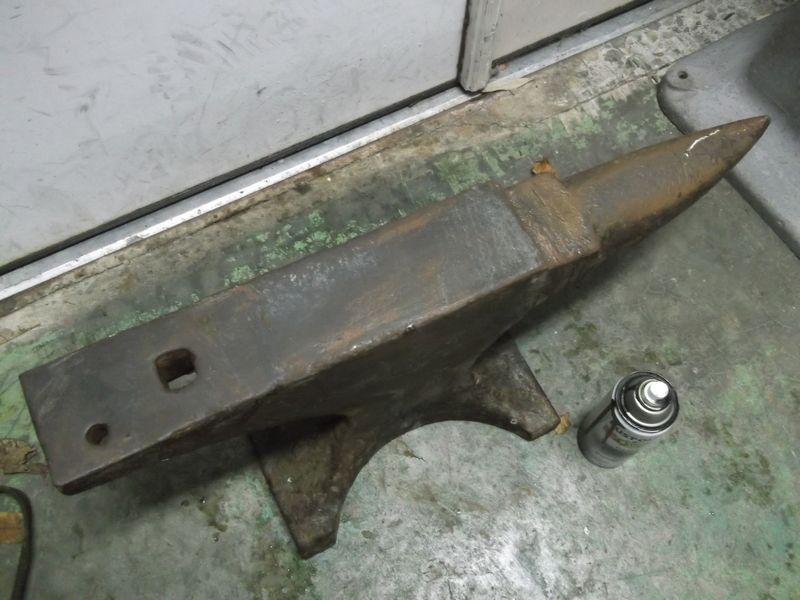I am now starting to dabble a little with some blacksmith type work, so I finally picked up a nice Buffalo Forge coal forge with a hand crank blower and a pretty old Hay Budden Anvil on a stump. My questions are; is there a good way to clean the anvil?

Note on Rokon history. In compiling this history, and in an effort to make it as accurate as possible, I contacted many people who were key figures in Rokon's history. Anvil Identification. 'There is one other diference in those anvils with the 'A' prefix. The number on the front of the. Please double check the serial though.
I do not want to use any wire wheel or power tools on it. I used a wire brush and found a serial number, looks like 65530 (Is there a way to determine the age by this serial number?) it also has a number 8 stamped under the horn. Under the Hay Budden logo there are the weight markings 1.7.0, which according to my research would mean that this was supposed to weigh 112 + (28*7) + 0 or 308 pounds, and that is not close.
So do these numbers mean something else? I would guess its weight at about 180 pounds. And my last question is, should I put some thin fire brick or something in my forge around the area where the fire is, or leave it? Vpn Tracker 3.5.1 Download. I'll snap some pics later and try to post them up.
Maybe I should not have started expanding the metal working hobby yet, but I can't help it. Thanks in advance. Turbotax Canada 2014 Keygen Torrent.
I have a 275lbs buddin that was made in 1904 I used a wire wheel on it to get the rust off of it then I used a flap sanding wheel on the top and the horn to get them all shined up. I then waxed the whole anvil and put it in my living room on a beautiful cast iron stand. This thing is mint I am not worthy of striking such a fine anvil, I have used it a couple of times I could not resist, I had no idea it was that perfect when I bought it since it was real dirty I dont think it was used much since there are no hammer marks in it. You wont hurt it with a wire wheel just dont sandblast them they look terrible when people do that.
>More to the point, amongst the nearly complete set of blacksmith >tools I am now the proud owner of is the anvil. It is marked >underneath the horn, on the foot, with a series of stamped >numbers/letters. The first character looks like a capital T with a >capital Z that has been rotated clockwise 45 degrees stamped over the >top of the T; not above it, but in the same space as the T. >Following that is '157' a bit of a space, and then 'A86799' I have >not found any other legible markings. All the characters are about >1/2' tall.
The anvil has a seam visible at the waist, and a fine line >visible where the top plate is attached. It has both a hardie and >pritchel hole also. It has a nice ring to it when struck. >Is that enough information for anyone to identify the beast?
>Brad Heuver Brad, as I wrote you earlier I believed this anvil to be a Hay-Budden. Last night I reread the Hay-Budden section in Richard Postman's 'Anvils in America', (just published and by far the best work on the subject available!), and I think I found the clincher! 'There is one other diference in those anvils with the 'A' prefix.
The number on the front of the waist under the horn is always a '4'. Somtimes the '4' is upside down.' This 'upside down `4' sure sounds like your 'T-Z' mark.
Please double check the serial though the 'A' series are not listed as having gone as far as the 80K's, (if it is a 30K number it was made in the early 1920's) BTW although two british firms Mousehole and Peter Wright used the old hundredweight system of marking, most of the american firms did not. They used a simple weight stamp. Hay-Budden also used a 1-3 digit stamp that is believed to refer to the lot of steel used in its construction so if the 157 is not indicative of the weight it is probably this lot number) Another sign of the Hay-Budden is the 'hourglass shape' of the indentation on the bottom of the anvil, (actually a fairly thin rim that projects down from the edge of the base and so follows the base's contours.) [I told you it was a *good* book.) Thomas Powers Columbus, Ohio (once a major anvil manufacturing center!) Gene Olson 02.10.98 0:00. In article, Gene Olson wrote: >Well, as long as we are in ID mode. >(what the heck as long as it works) >>I bought an anvil new in about 1971.